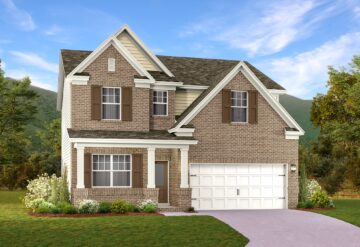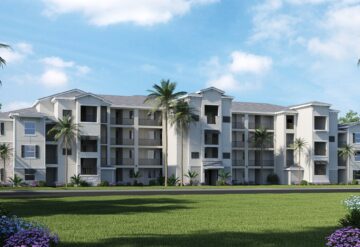Diana Olick of CNBC reports on how multigenerational homes are a huge opportunity for homebuilders, due to the fact that most existing homes weren’t built for this type of living. The article and the video that accompanies it highlight Lennar as a leader in offering multigenerational home designs.
Jennifer Michaels didn’t expect her Seattle-area house would sell so quickly, especially since she hadn’t settled on a new home yet. With nowhere to go, the divorced mom moved herself and her two teenagers in with her mother, Lucy Abbott, thinking it would be temporary. Much to all of their surprise, they didn’t hate it.
“I enjoy the life that the kids bring to you when they are around you all the time, but we did have our challenges,” said Lucy, who would prefer we say only that she is in her 70s.
The challenge was the space. Lucy’s house was large but, like so many other existing homes today, not built for multigenerational living. So after a few years, with the kids getting bigger and more independent, Jennifer and Lucy went house hunting together and found what they were looking for in a newly built home designed specifically for their situation.
“Everybody has their own privacy and their own space, so for instance, my mom has her own suite,” said Jennifer. “It is essentially a full one-bedroom apartment on the main floor, so I don’t have to worry about her falling down the stairs. She has her own front door, she can have her own decor there, she can stay up however long she wants and not interrupt the family either and also, we have enough space as a family to have a regular family unit, and then she can have her separate living.”
The family moved intoThe Home Within a Home, a brand from Miami-based home builder Lennar. The brand is doing very well for Lennar, which has made a heavy push into the multigenerational space.
“Older homes were built for young families, and we have 21 million households now living multigenerationally, with one generation having to share a bathroom that’s used by the entire house, some people live in the garage,” said John Burns of John Burns Real Estate Consulting. “I think the builders figured out there was a huge opportunity here that they had missed, and Lennar was a real leader in this a few years ago, designing for these types of households.”
In a recent survey by Burns Consulting of 20,000 home shoppers, 44 percent said they would like to accommodate their elderly parents in their next home. Forty-two percent said they plan to accommodate their adult children. The numbers are increasing for several reasons: The recent recession and resulting unemployment hit young workers hardest. An abnormally high number of them therefore never moved out of their parents’ homes. Millennials are also marrying later in life, keeping them with their parents longer.
Immigration is another driver. In Asian and Hispanic cultures, multigenerational living is usually the rule. As these immigrants move to the U.S. in greater numbers, they bring the trend along with them.
Then there are retiring baby boomers. The largest generation is downsizing. Some are choosing active adult communities, but a significant number are choosing to move in with their adult children. With more dual income households, help from live-in grandparents is often a necessity.
Builders are now seeing and acting on a clear multigenerational wish list: Separate entrances are a must, then main-floor bedroom suites with private kitchenettes and living spaces, even separate outdoor spaces. The idea is that the family can live under one roof, but not entirely together.




